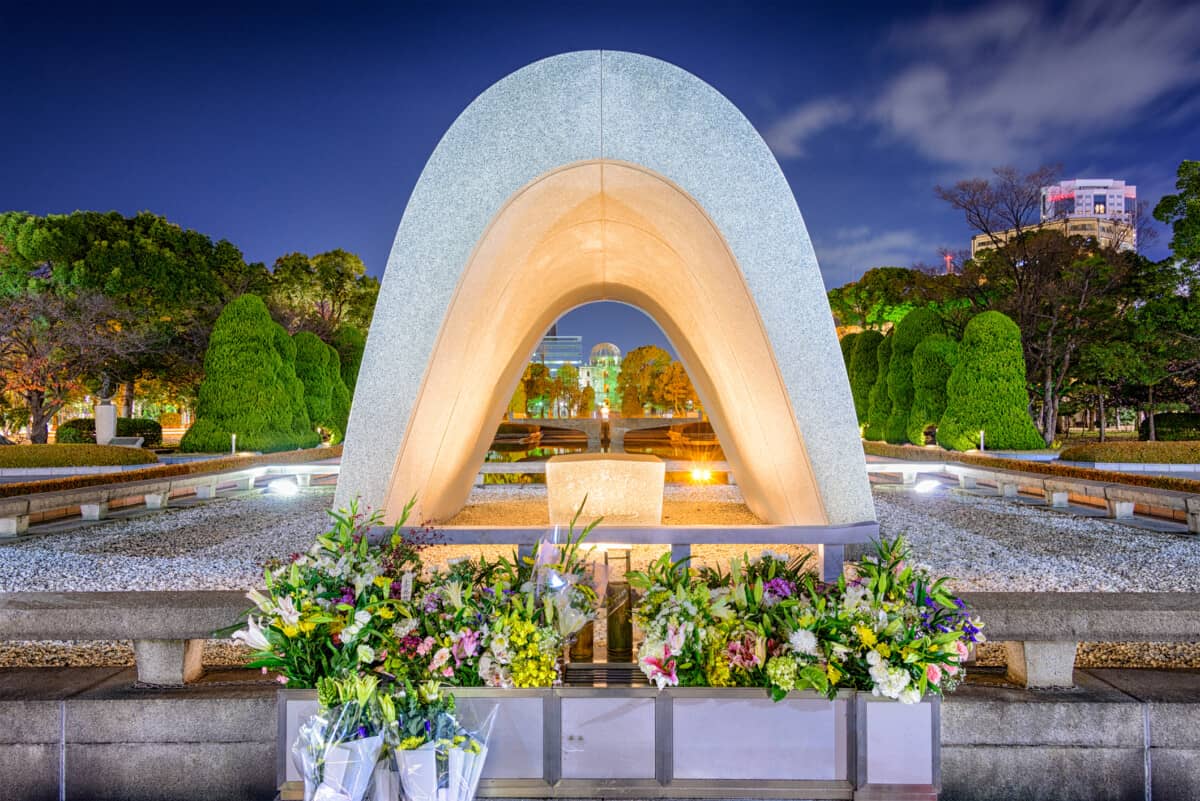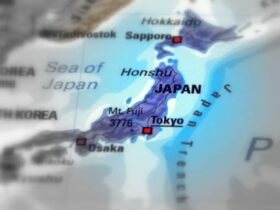Located in the heart of Hiroshima, Japan, the Hiroshima Peace Park is a legacy memorial dedicated to the lives lost after an Atomic Bomb was dropped on Hiroshima, decimating the city and its population. The park is 1.2 million square feet altogether and houses Peace Memorial Museum and the A-bomb Dome.
The park is an expansive mix of green and concrete space that is nestled into the downtown area of Hiroshima today. Visited by more than one million people each year, this park is definitely worth going to while visiting the historic city.
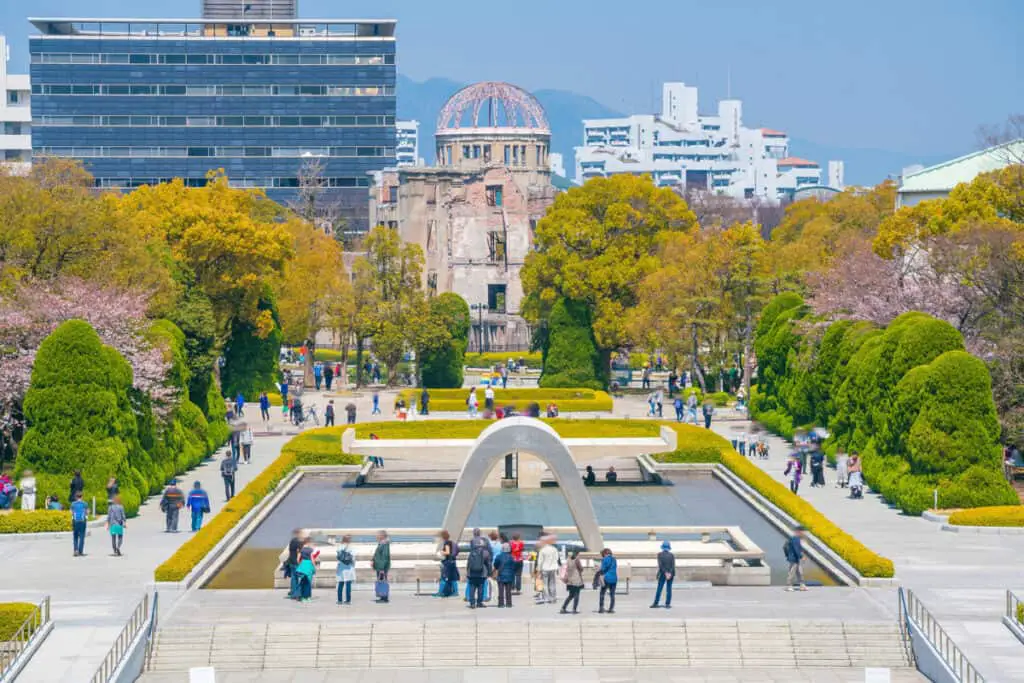
Exploring Hiroshima Peace Park
The Hiroshima Peace Park is a memorial park constructed in the heart of downtown Hiroshima to commemorate the devastating nuclear event that destroyed the city decades ago.
A number of memorials fill the greenery of the park to serve as reminders of the lives lost in the atomic attack.
The park covers a large area in the center of downtown Hiroshima and offers visitors an opportunity to not only escape the crowds of the city but also to learn about the destructive nuclear attack that shaped not only today’s Hiroshima but the entire world.
Hiroshima Peace Park Location
Hiroshima Park is located in the heart of downtown Hiroshima and can be accessed on foot, by car, or through the network of public transport. The park is expansive and lays just south of the Hiroshima castle.
The park was intentionally built in this spot for a special reason: this area was the exact epicenter of where the bomb was dropped. This central location was the commercial and political hub of Hiroshima and was thus targeted for being a valuable military target against Imperial Japan.
Hiroshima Peace Park Location Via Google Maps
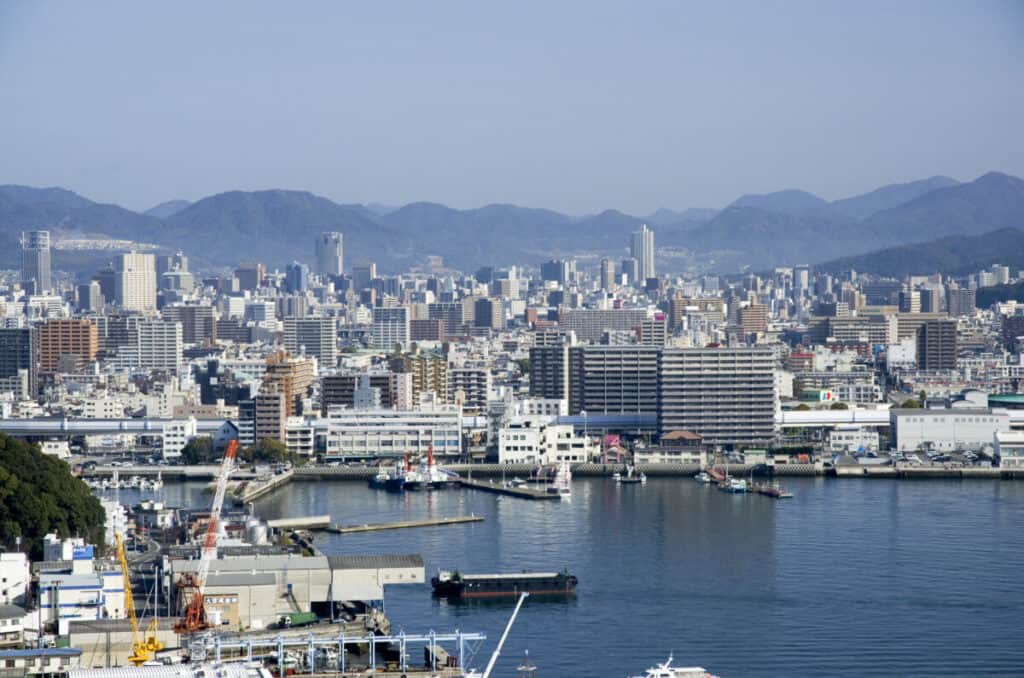
Why was Hiroshima Peace Park built?
On August 6, 1945, an American bomber the “Enola Gay” name for the pilot’s mother Gay Tibbets, dropped the first Atomic Bomb in the center of Hiroshima. The devastation was immediate to the city and people, while the following effects also caused mass casualties in the surrounding area.
Exactly four years after this horrendous event, it was decided that the Hiroshima Prefectural Industrial Promotion Hall center would not be rebuilt. Instead, the Hiroshima Peace Park was built, as a memorial to the estimated 140,000 lives lost that day and in the subsequent years, as well as an advocation for world peace.
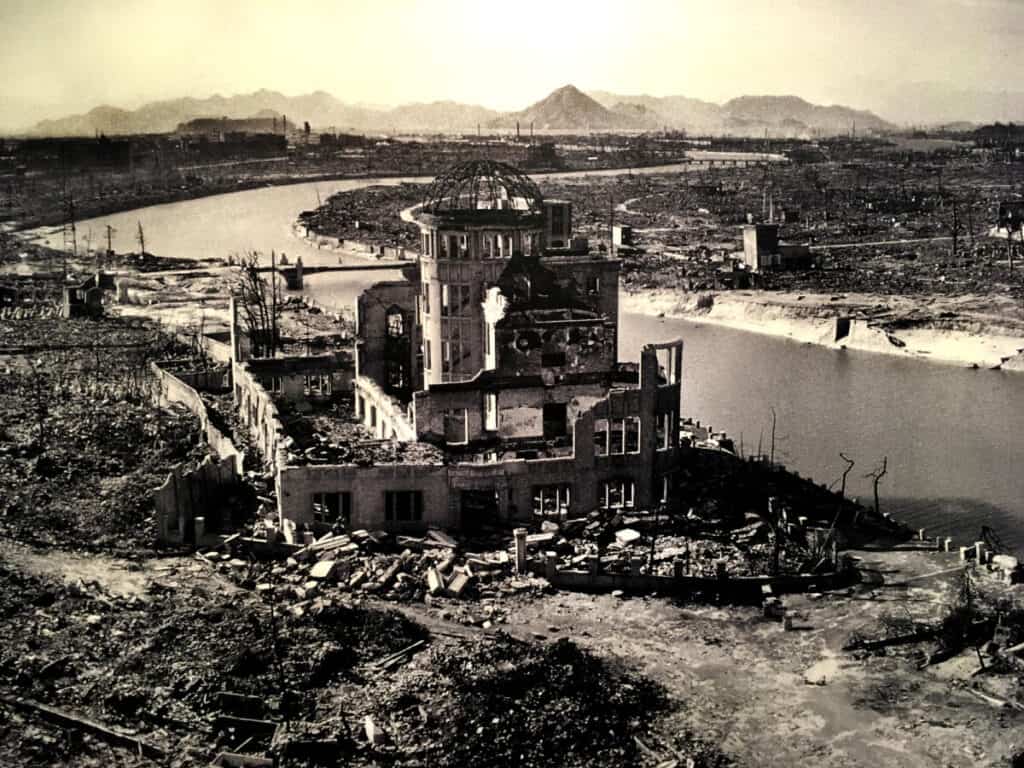
When was Hiroshima Peace Park built?
The initial decision to build a memorial instead of redeveloping the area happened exactly 4 years after the devastating event. The park covers a large area of the center of Hiroshima and took 6 years altogether to build.
The park opened in 1954, but the numerous monuments weren’t built until the years after. The Hiroshima Peace Memorial Museum and Hiroshima Peace Memorial Hall were established one year after in 1955.
Hiroshima Peace Park is worth seeing
If you’re in Hiroshima, then seeing this memorial park is well worth the visit. Whether you’re a history buff, or you just want to take the time to honor the tragic past of this beautiful city and its people, then visiting Hiroshima Peace Park should be on your itinerary.
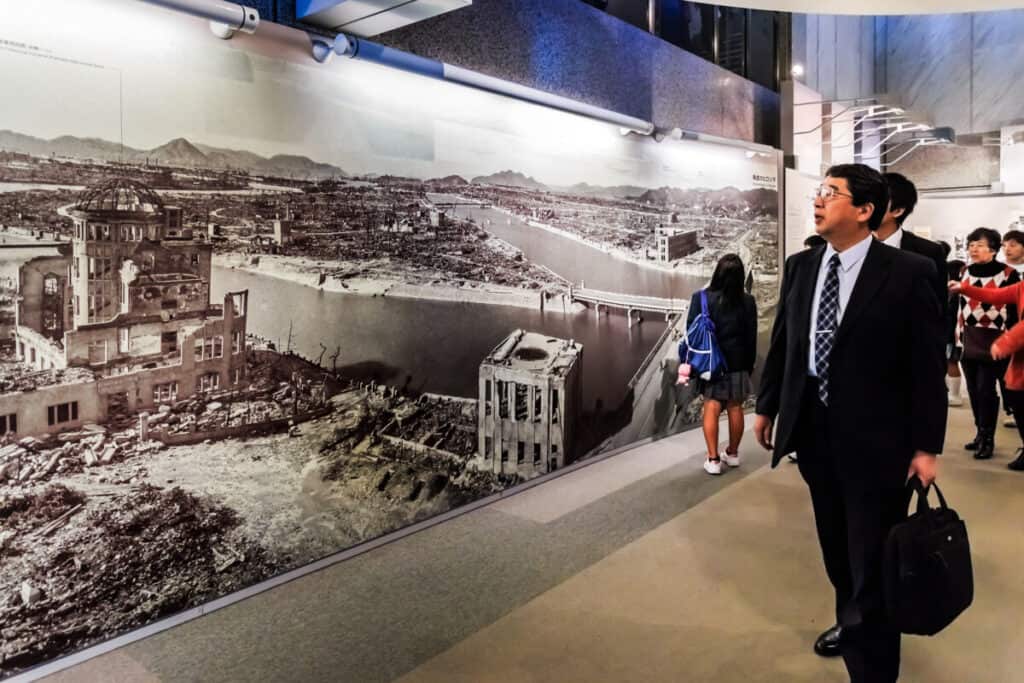
There is a museum that highlights the lasting effects of the A-bomb as well as what Hiroshima was like before it dropped. The UNESCO-protected A-Bomb Dome also stands as a reminder of the catastrophic effect of Atomic Bombs and should be on everyone’s must-visit list.
Hiroshima Peace Park Museum Official Website
Getting to Hiroshima Peace Park
Because the Hiroshima Peace Park is centrally located, it’s easily accessible from anywhere in the city. You can easily drive, bike, walk, or take public transportation to the memorial park. You can also use the sightseeing tour bus which makes a stop at the park.
If you want to take the train, you can take Tram line 2 or 6 for 15 minutes from Hiroshima Station to Genbaku-Domu Mae. If you want to take the bus, you can take bus 24 from Hiroshima Station and get off at “Heiwa kinen koen”.
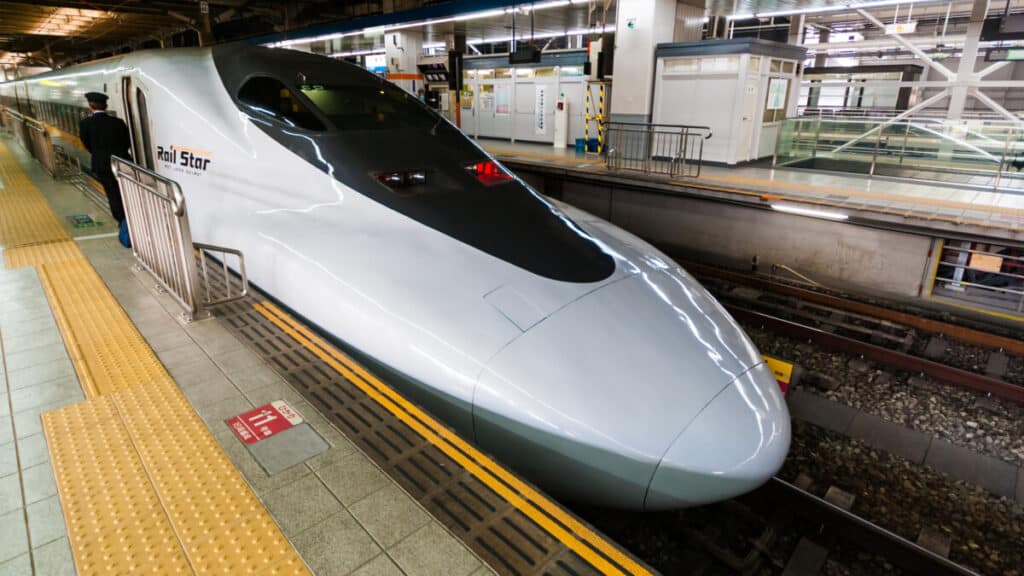
Hiroshima Peace Park What To See
There are many different things you can do while in Hiroshima Peace Park. You can visit the museum to take a journey through history, beginning in the years before the bomb, and ending in contemporary effects after the bomb.
You can also walk through the park and visit the dozens of memorials to the victims of the bomb such as the Cenotaph for the A-Bomb victims. You can also make your way to the north end of the park to see the UNESCO-protected A-Bomb dome building, preserved from that 1940’s era.
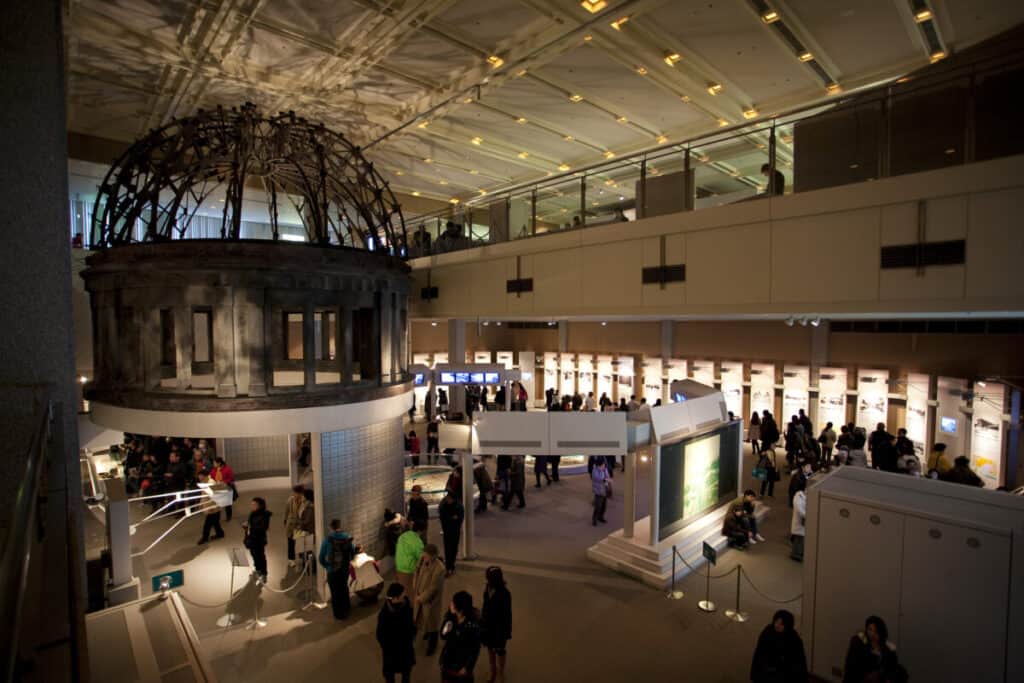
Hiroshima Peace Park Radiation?
Even though massive amounts of radioactive energy were released when the bomb was dropped (enough to completely annihilate people, leaving only their shadow), there is no excess residual radiation that you have to worry about today.
Although the park stands right at the spot where the city was leveled into a field, the radiation levels are no more than any other spot in the world. You, nor the residents, have to worry about any continuing radiation.
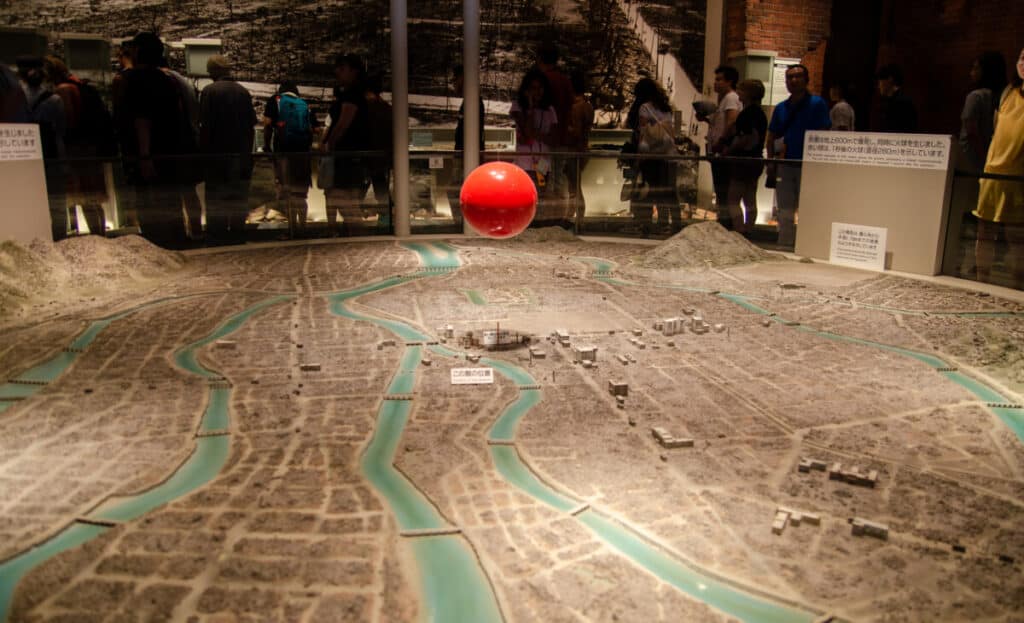
Are there events that happen at the Hiroshima Peace Park?
Every year festivals are held in the park to remember those lost in the bombing. A solemn reminder for the people living there as well as foreign tourists who may be visiting the area, these festivals involve speeches, testimonials, and ceremonies all in the name of world peace.
Thousands of people attend the August 6th ceremony every year as well as ambassadors from over 70 different countries who join with the crowd to honor and remember all the lives lost and affected by the bomb.
Hiroshima Pece Park Attractions, Accommodations and Events Via Tripadvisor
What are the Notable Monuments to see in Hiroshima Peace Park?
Although every memorial should be visited, with time to spend in reflection to what is being depicted, if you have only a short amount of time to visit the park there are a few famous memorial monuments to visit while in the park.
The Hiroshima Peace Memorial Museum, the Cenotaph for the A-Bomb victims, the A-Bomb Dome, and the Children’s Peace Monument are all moving pieces that demand reflection when you see them and should be visited while in the park.
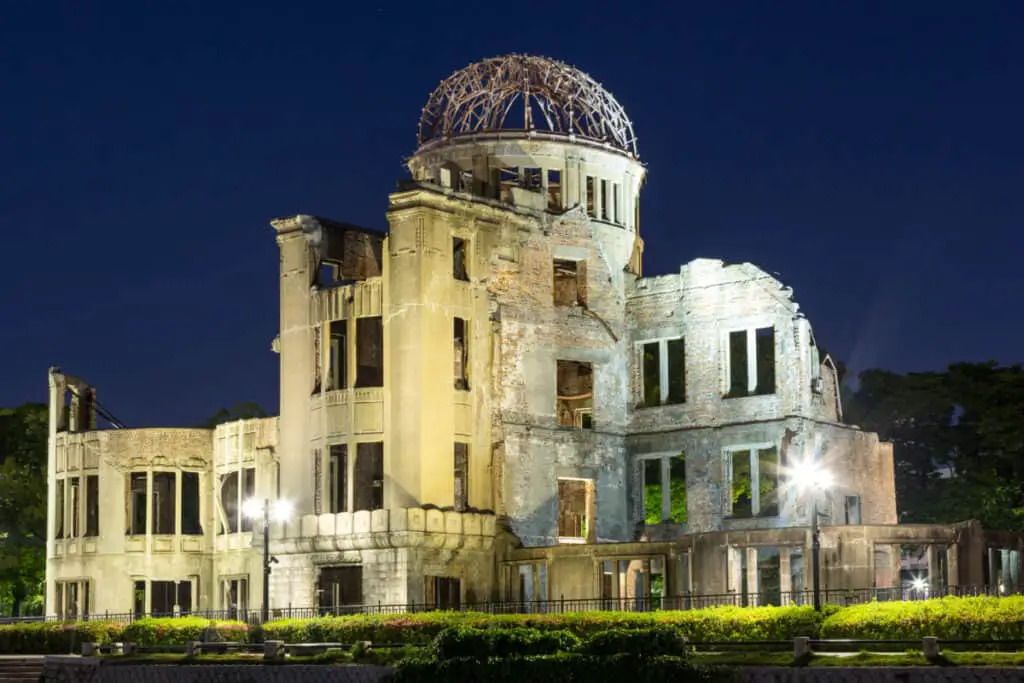
Should I visit Hiroshima Peace Park with a Tour or by Myself?
There are a few positives with booking through a guided tour group to visit Hiroshima Peace Park. Namely, you get a thorough learning experience covering many aspects of the event as well as a closer look as to the effects of the bombing that aren’t shown in the monuments and plaques.
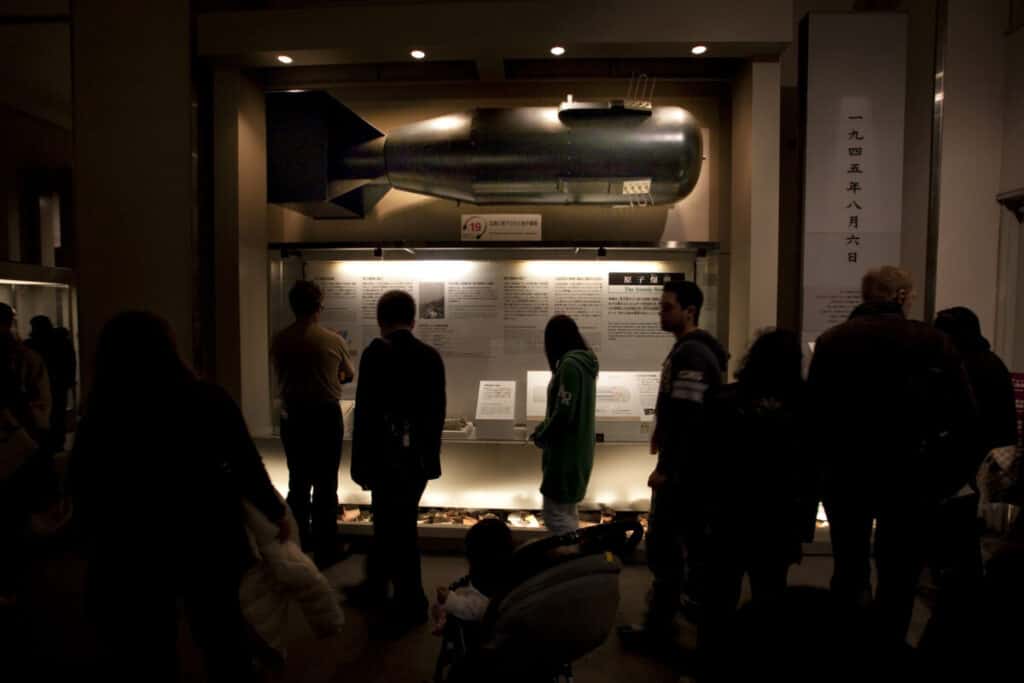
Whether you go on a guided tour, or you decide to go solo, the park is bound to have a lasting impact on you. The monuments, museums, and plaques all over the park lay flat the story of the world’s first atomic bombing in a way that will move you regardless of how you go about the park.
Guided Tours and Lectures Via Hiroshima Peace Memorial Museum Official Site
Why is it Important to visit Hiroshima Peace Park?
No matter which way you choose to explore the park, the only thing that matters is that you go. Not only is the park historically interesting, but the overarching message pushing for everlasting world peace is one that everyone should take to heart.
Hiroshima Peace Park And Museum Official Website
Not only will you learn a lot about a very significant event in history, but you also get to see, firsthand the ripples caused by such historic events.
Hiroshima Peace Park does a wonderful job of showcasing this solemn event in a way that moves and inspires you. It is well worth visiting.

